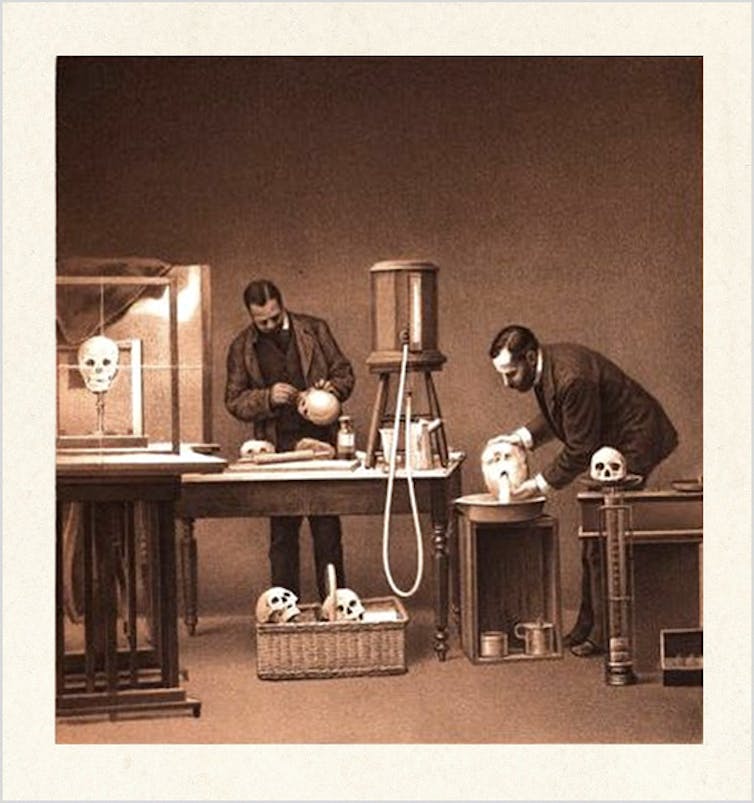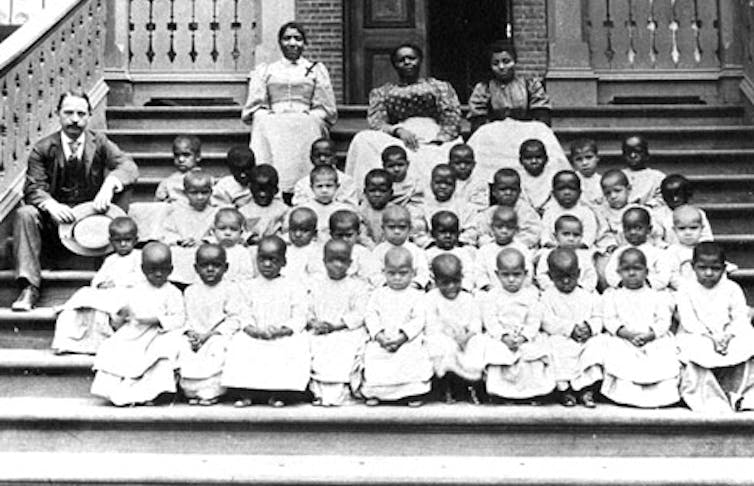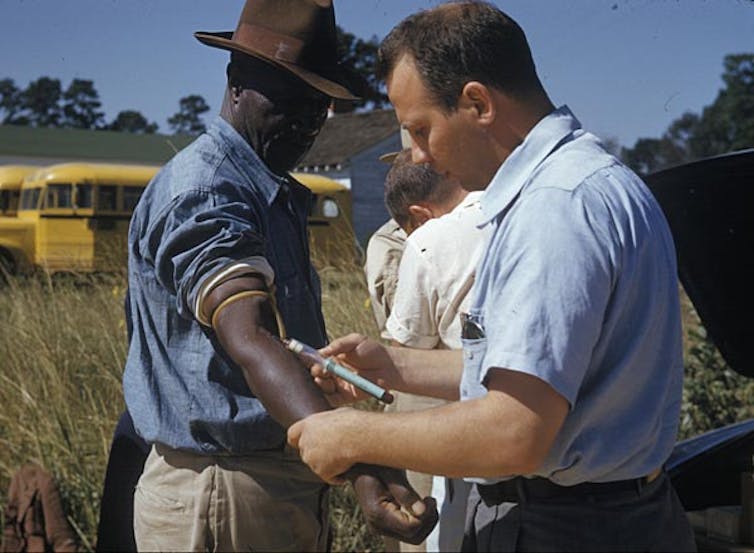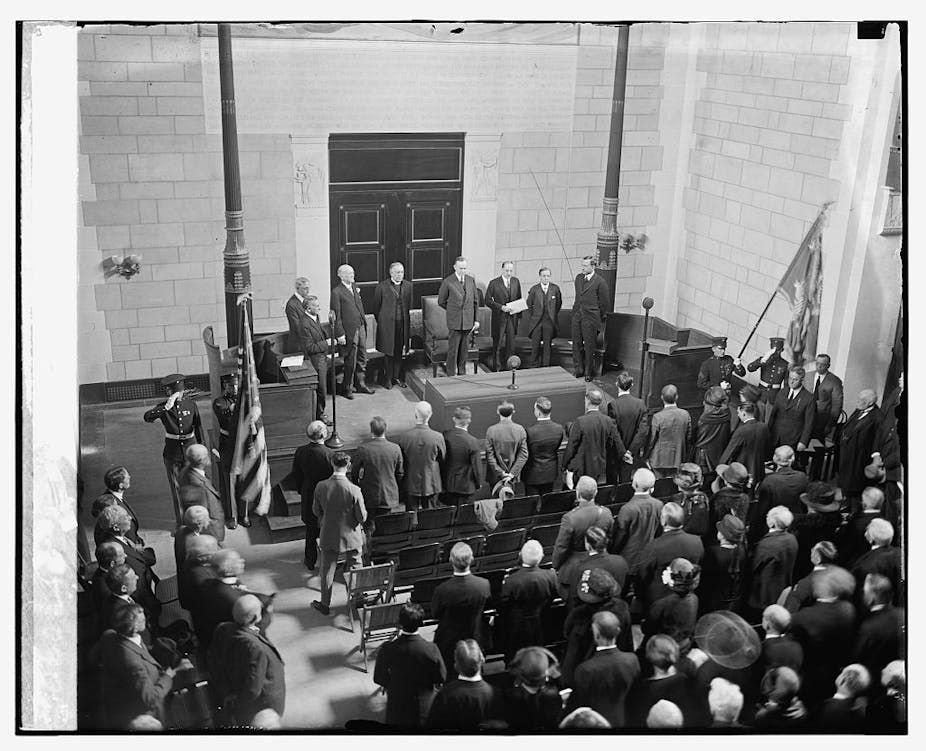In the late 1920s, scientists hatched an outrageous plan to settle a question at the heart of American racial thought: were differences between racial groups driven by environment or by heredity? In other words, was the racist social order of the time – white over black — an inevitable and genetically driven outcome? Or did the environment in which all Americans lived create the deep disparities and discord between races that defined the social, economic and political reality of the United States?
A committee on “Racial Problems,” jointly sponsored by the venerable National Research Council and the Social Science Research Council, discussed an experiment: create racial orphanages, separate institutions where children of different races would be received as close to birth as possible. The idea was to compare white and black children under similar conditions. Scientists could closely monitor the institutionalized children as they developed to figure out whether differences were due to innate characteristics or environmental influence. Nursery schools and foster homes were proposed as places of comparative study too, but most of committee’s discussions focused on the idea of racial orphanages.

Science has made claims about race in America since the late 18th century, when Thomas Jefferson hypothesized that the differences between races are “fixed in nature.” In the 19th century, anthropologists such as Samuel Morton argued for a racial hierarchy of intelligence and believed human races evolved from separate origins. Eugenicists tried to quantify the hereditary nature of race difference in the early 20th century, using their science to develop social policy, including forced sterilization and anti-immigration laws. Racism has indeed left its stain on scientific thought.
The committee on “Racial Problems” was no different. Its 1930 report alleged the racial orphanage experiment could “throw light” on how heredity and environment influenced health, vigor, intelligence and sociability. To do this, scientists would try to improve the condition of the black children in the study by altering environmental factors, including shielding the children from racism, offering improved nutrition, and providing better educational opportunities than they might otherwise have had.
The idea for the experiment came from Dr Joseph Peterson, a psychologist at George Peabody College for Teachers in Nashville (now part of Vanderbilt University). Peterson wrote extensively on racial differences in intelligence. He proposed that the experimenters have “complete control” over children enrolled in the study from birth through schooling years.

At a 1930 meeting to discuss the proposal’s feasibility, concerns were raised on a number of issues. Could the differences in care between the black and white children be controlled for? Could the children be shielded from the racist world around them? And how would children be recruited into such a study?
Recruitment proved to be a sticking point. In a chilling exchange, psychologist Knight Dunlap from Johns Hopkins and Clark Wissler, an anthropologist at the American Museum of Natural History, discussed “the difficulty of obtaining children.” Dunlap worried about the “difficulty in getting a perfect sampling of children away from their parents.” Wissler’s response: “Suppose you took infants completely at random. If we are interested in the question of how much the actual life creates bias, shouldn’t you have random selection?” The committee went on to debate whether it would be more “desirable in this study to take orphans, in order to be free from the home environment” or whether “taking negro children away from negro families” would be better for the proposed experiment.
What Dunlap and Wissler meant when they talked about “taking” children from black families isn’t clear. Whether they wanted to forcibly remove black children from their homes or had in mind some form of consent or some incentive, is unknown. It’s ironic that the closest the committee came to any level of concern for the children was wondering what would happen to black children raised in an environment shielded from racism once they became adults, left the orphanage, and experienced the full force of American racism.
By today’s standards, such an experiment seems preposterous and disgraceful. Preposterous because of the implicit and explicit racism that shaped and limited such a study. Disgraceful both because of the inferiority committee members ascribed to an entire race – even while debating an experiment to see if that alleged inferiority was or was not innate – and because there was no consideration of the ethical implications of placing children in an orphanage under experimental conditions.
The only good news in this history is that the study never went forward. By 1931, the idea for racial orphanages died.

Yet, at that same time, preparations were beginning for another awful and unethical racial experiment. Beginning in 1932, the notorious “Tuskegee Study of Untreated Syphilis in the Negro Male” was in the earliest stages of its forty year study. Like the proposed racial orphanages experiment, it was a federally sponsored project and assumed that traits believed to be unique to African-Americans and whites were worthy of both study and expense.
These studies of race — proposed and actual — assumed difference and inferiority. Such presumptions fueled unethical behavior, from the denial of effective medical care for the men in the Tuskegee Study to the proposal to take children from their families to place in an orphanage. It is somewhat heartening that neither study would win approval today thanks to ethical safeguards put in place in part because of the fallout from the Tuskegee Study.
Though the deeply rooted racism of the proposed racial orphanages experiment is today largely absent from science, science still struggles with the meaning of race. Today mainstream scientists utilize race in studies of human evolutionary history, to study the distribution of health-related traits within and between groups, and to use an individual’s ancestry to help determine the best medical treatments.
But this too is not without controversy. Many scientists argue that race is an imprecise marker of human genetic diversity and a poor proxy for predicting disease risk or drug response. As experiments like the racial orphanage and Tuskegee studies remind us, the scientific and social meanings of race are inseparable. The use of race in scientific study is problematic at best and dangerous at worst.

